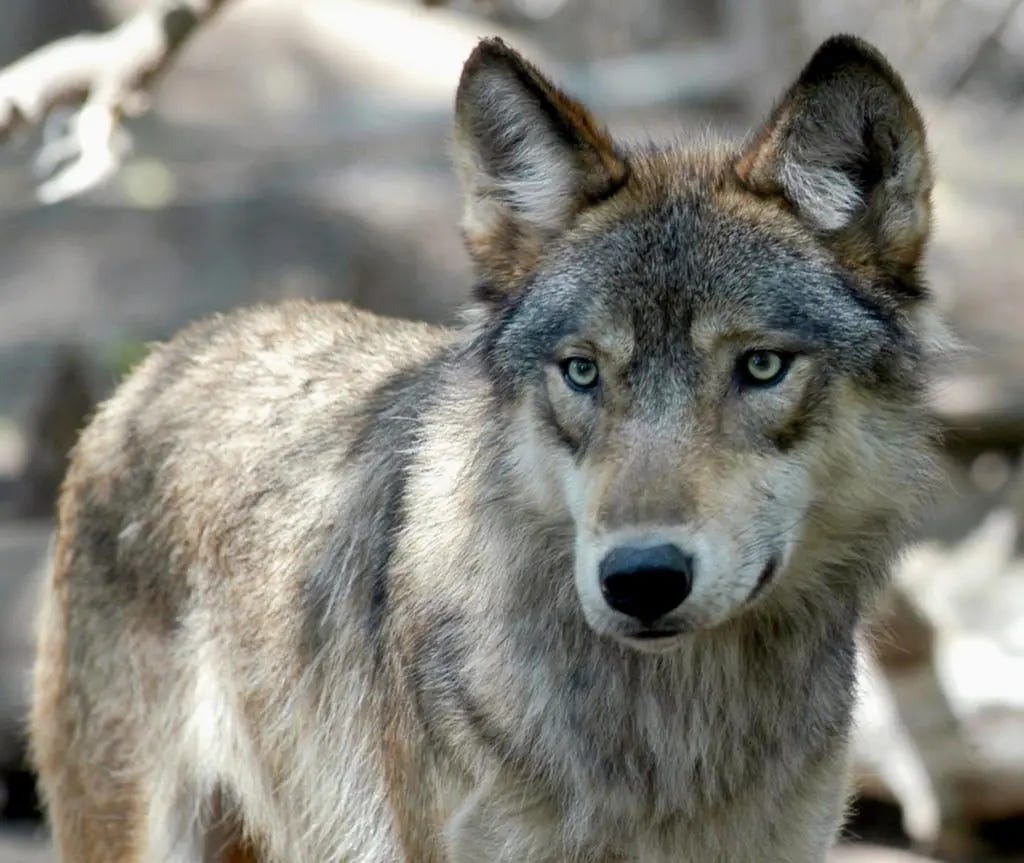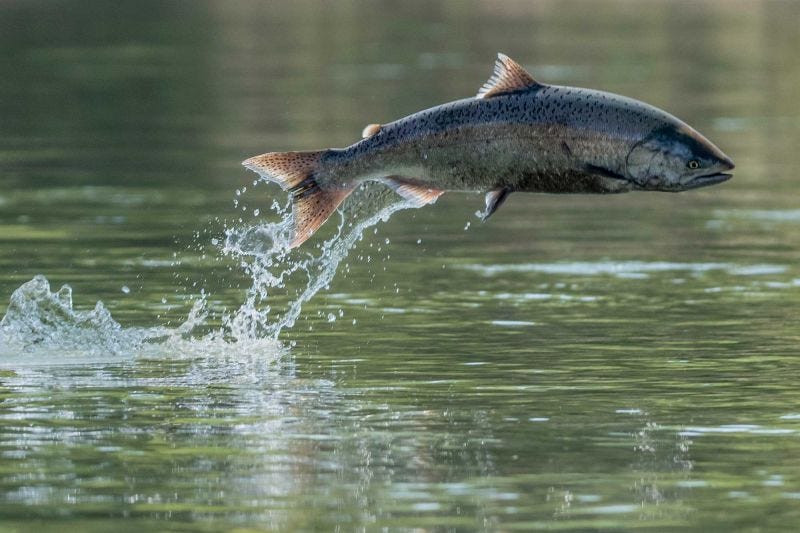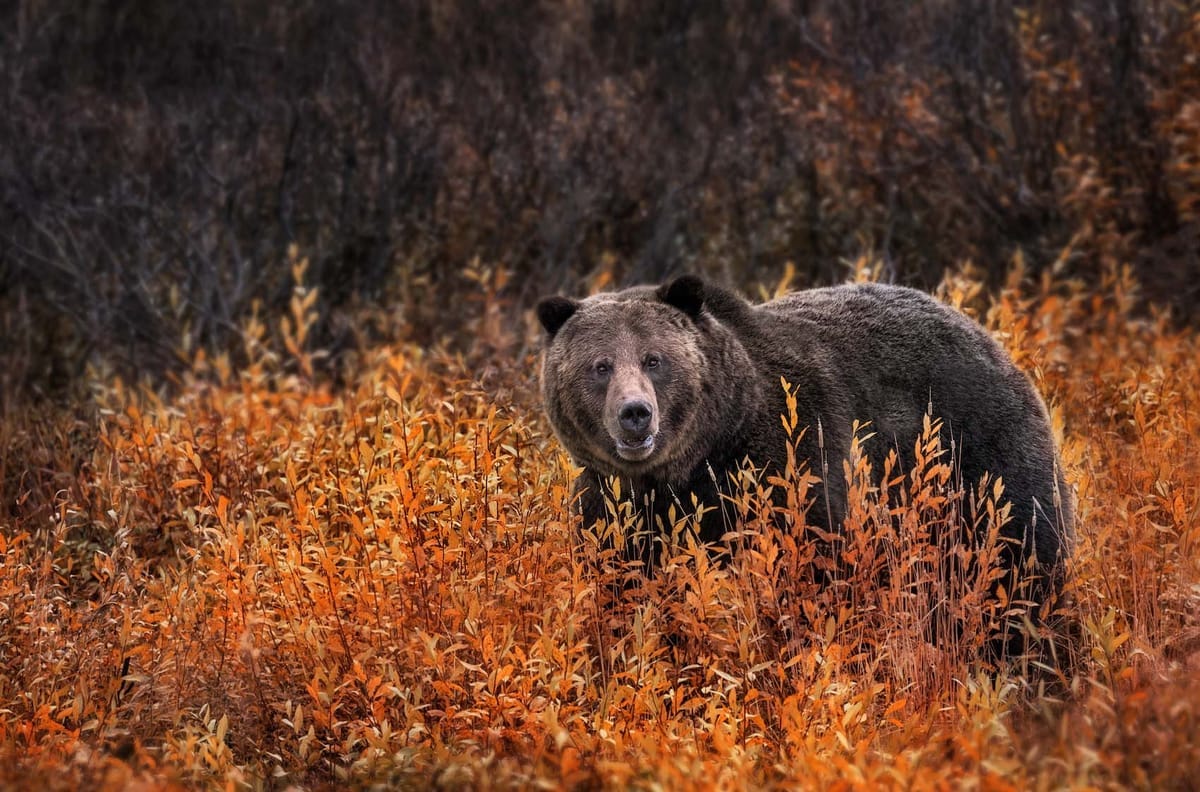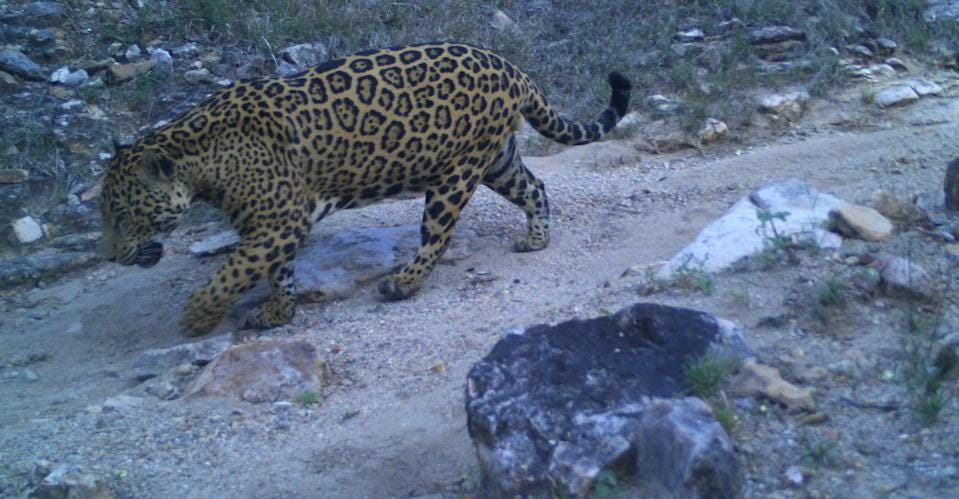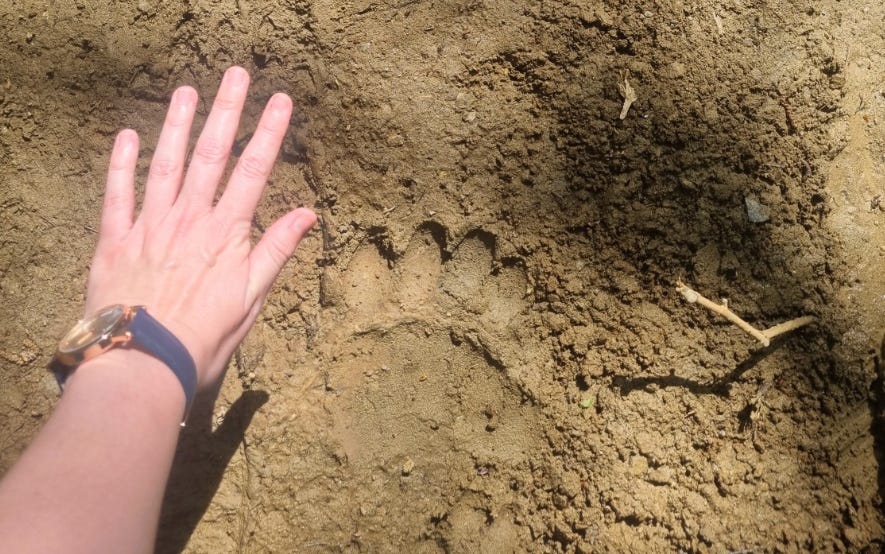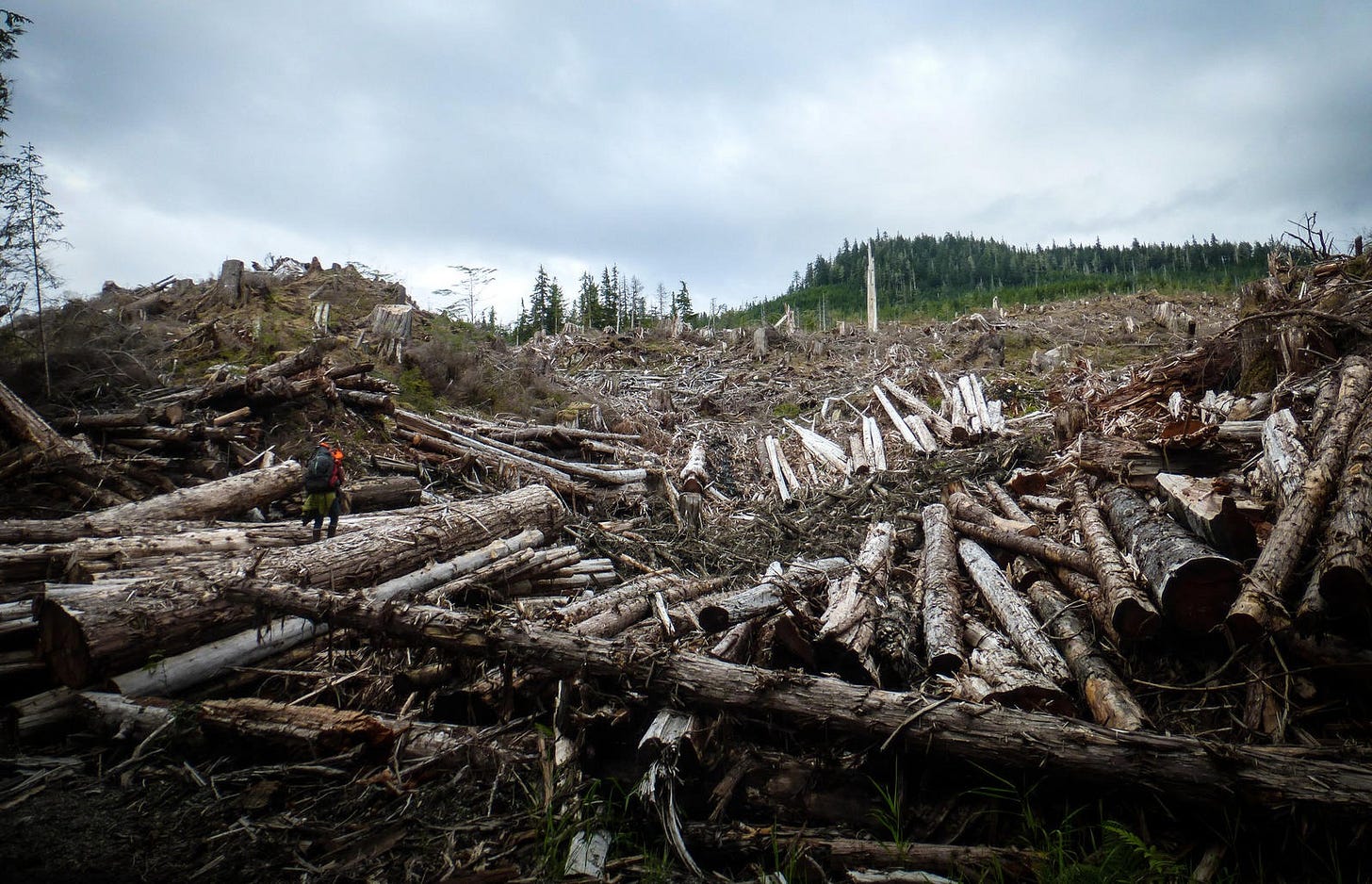Welcome to the latest edition of the Rewilder Weekly! 🦬🌳🐺🌞🌍
Before jumping into this week’s eight selected stories I wanted to ask you to chip in: Last year over 10’000 badgers were killed for no good reason in England - and the annual badger slaughter will continue, unless the current legal challenge put for by The Badger Trust and Wild Justice succeeds in court. Read about the case here - and please, 👉👉👉 do chip in - every little helps!
Oh, and one more thing! The Rewilding Our World conference takes place from 20-21 September in the Netherlands. If you can make it (and I hope I’ll be able to!), you’ll be in for two days’ worth of amazing rewilding insight and inspiration (lots of great speakers!). Check it out and register before it’s inevitably packed.
Now then, let’s get on with it - wishing you a good week.
Cheers,
👉 As a reminder: If you come across stories you’d like to see featured in an upcoming edition of the Rewilder Weekly, send them to me and I’ll gladly do what I can.
1) National Huemul Corridor - an award-winning story
Tompkins Conservation shares that their offspring, Rewilding Chile, has won a StoryMaps Competition award (from 570 entries across 58 countries!) for their multi-faceted reporting on the work to save the endangered huemul deer (also called south Andean deer). Of the huemul deer, the southernmost deer on the planet, there are only about 1500 left in Chile and Argentina. The storymap features imagery, videos, interactive maps, and lots and lots of insights about this reclusive deer, its habitat, the many threats and countering protection/restoration efforts.
You’ll see that this beautiful creature is faced by much of what our species has brought: there are diseases (from livestock) and invasive species like red deer and boar taking their food. Among the greatest threats are attacks by domestic dogs (this tracks eerily with the havoc domestic dogs wreak on livestock in Europe - see next story). Rewilding Chile writes, “By creating, expanding, and connecting protected areas, large-scale ecological processes are enhanced, such as the interconnection of fragmented subpopulations and the successful dispersion of young individuals, thus reducing the risk of local extinctions.”
👉 Go here for the award-winning storymap
2) The wolf is collateral damage - the real target is … you
Allow me to highlight Kriton Arsenis’ post on LinkedIn about the hard truth behind the fearmongering narrative that’s being spewed against the wolf across Europe (and beyond). He writes, “Across Europe, governments are pushing for illegal culling, even within protected areas. At the same time, efforts are advancing to downgrade the wolf’s protection under the EU Habitats Directive and the Bern Convention. But let’s be clear: The wolf is not the real target. The wolf is collateral damage. The real target is you — you who still believe in nature restoration and Earth regeneration … The focus on the wolf is not truly about protecting farmers or public safety. These are pretexts. What’s actually being dismantled is the idea of coexistence — and with it, the broader ecological thinking that once informed policy across Europe.”
He goes on to detail that the data of wolf attacks against livestock are minimal compared to all else (accidents, extreme weather, diseases, neglect - he points out that in some European regions the culprits for up to 62% of livestock attacks are … domestic and stray dogs). He rightly points out that the lobbies’ focus on the wolf means that the real threats remain ignored. Read Arsenis’ full post - and do your bit to demand more focus where focus is needed - as he writes (and I think I’ve phrased it the same way in the past): “The wolf does not need us. We need the wolf.” Remember the above headline - the slaughter of wolves is collateral damage - we are the target, we, humanity. If we destroy functioning ecosystems and these all-important ecosystem engineers … we destroy ourselves.
👉 Go here for Kriton Arsenis’ post
3) Here’s to many, many more wild salmon!
June 1st marked Wild Salmon Day. The presence of many species are important indicators about ecosystem health, but the wild salmon is undoubtedly one of the most visible such examples. When they are present in numbers, you can tell a great deal by that very fact - it means that rivers flow naturally (no insurmountable barriers), it also means that water temperatures are right because riparian flora is abundant, providing essential shade. And when you have that, of course, you have insects and birds and many more critters like the keystone species that is the beaver, showing up. And then there’s feasting on salmon, too! Their presence in numbers brings a great deal of nourishment into the ecosystem.
Long story short - when you have salmon swimming rivers in healthy numbers, you most likely have a very healthy ecosystem. All that needs doing in that case is stepping back and enjoying it all! Conversely, if, as in many places these days, wild salmon numbers are dwindling - every single alarm bell should go off. And then action better follow - there are some great examples out there - like the return of the salmon up the finally un-dammed Klamath river. It can be done - where there’s a will and all that. Key isn’t just the river, but either side of it - and Scotland's RiverWoods project shows how to go about it.
👉 Go here to learn all about the RiverWoods project
4) Do wildlife tourism and large carnivores go together?
Jonny Hanson has written the book “Living with Lynx: Sharing Landscapes with Big Cats, Wolves and Bears” (published earlier this year). In it he shares experiences and learnings from his life, and from his plus fifty interviews across various countries. The key question he was hoping to find the answer to was this: “Could and should we learn to live with lynx, wolves and bears?” For you and I and everyone even remotely connected to nature recovery, the answer is, of course, every way you look at it, an emphatic and obvious YES.
But it clearly isn’t quite that straightforward for some. There are honest concerns, there are traditions and, unfortunately, there’s also a great deal of fearmongering. In his book, Jonny is able to look at all of it in a balanced way, drawing on his experiences both as a conservationist and a farmer. In the article (which is an excerpt from his book), he gives you a sense of being there when a bear mom and her cubs mingle with livestock (nothing gory happens) - and he shares some anecdotes that very much answer the above title’s question - the main challenge with wildlife tourism and large carnivores is, in Jonny’s words, “We humans have a tendency to do dumb things.” Too true. Ecotourism and large carnivores go together beautifully - but education and respect for nature should be a prerequisite.
5) Beaver releases in Scotland are stalled because of insidious Government appeasement
This is getting ludicrous. Let’s start here: Scotland is one of the most nature-degraded countries in the world. The country is ranked 212 out of 240 countries and territories for the state of its nature. Nature restoration therefore - for all the OBVIOUS reasons - should be the Scottish government’s prime directive, a key factor in everything that’s done. Beavers are ecosystem engineers and their presence makes a hugely positive difference to the entire environment. Nature restoration organizations have diligently worked - for years - to do all the consultations and then some, to dot all the Is and cross all the Ts - and then, despite everything and overwhelming support by a clear majority of people, were shut down by NatureScot (the government agency in charge of handing out release licenses).
The freedom of information law now has brought 80 pages’ worth of emails to light, showing that the usual groups pressured the government to reject the application. The same things happened in 2023 already - and Trees for Life continued to jump through every hoop, burning or otherwise, to be able to finally bring beavers to Glen Affric. When you read The Ferret’s article, you’ll easily spot the flimsy arguments put forth by farming lobbyists and appeasing government officials … it’s beyond the pale and I do hope that some of these officials develop a backbone - standing up for nature is standing up for a healthy, flourishing, sustainable, resilient Scotland, for God’s sake!
6) A great way to get farmers to value large carnivores
This story from northern Mexico, where ranchers would pay the equivalent of about 250 US dollars for a shot and killed jaguar. Just as it is with other large carnivores, jaguars prefer wild prey and only occasionally take livestock. But that was the way it was done - only a dead jaguar was a good jaguar (sounds familiar, right?) The Northern Jaguar Project bought its first ranch in 2003 and today the Northern Jaguar Reserve covers nearly 60’000 acres - and they had a great idea: they would pay ranchers money, not for slain jaguars, but for photographs (from wildlife tracking cameras) that show the existence of the jaguar on their land.
The NJP has raised funds and created a pool from which these payments flow. In essence, the idea is to make having these animals alive on their lands more valuable for ranchers than killing them. Photos can earn a rancher thousands dollars every year and, because of that, by today twenty-one ranchers with lands around the reserve have joined Viviendo con Felinos. Participating ranchers commit to not kill these carnivores - and this commitment has helped increase the area where jaguars (and ocelots, pumas and bobcats) are protected by another 126’000 acres.
This idea should definitely be considered in Europe - seems like a solid system to me. Imagine if farmers were paid to have wolves and bears and lynx discovered on their lands. Instead of all the money wasted on fearmonger missions to kill these predators, how about monetizing their very presence for farmers - it might create a sea change.
7) A walk on the wild side in the Carpathian Mountains
Sara King is rewilding manager at Rewilding Britain and has just penned a rich report-back from her time in the Carpathians. Romania has the large chunk (60%!) of all of Europe’s brown bears - and some six thousand of them roam the Carpathian Mountains range. The places she visited are not remote reserves devoid of people, quite the contrary, these vast landscapes have been home to people and bears (and lynx and wolves) since time immemorial!
This fact creates an environment that is quite different from that of most of Europe, where large carnivores were practically gone, where people for several generations no longer had a sense of nature, of the importance and the value of large carnivores. Sara writes, “I felt such a connection with nature in Romania - the sheer abundance of species was magical, and knowing that predators roam in the landscapes really gave a sense of the wild. It provides such inspiration of what could be possible in our British uplands - a landscape bursting with wildlife alongside opportunities for us to live and work alongside it Why do we ask Romanians and other Europeans to live alongside these wild areas, yet fail to rewild our own? We really are missing out on so much, but I have hope that we can be inspired by these amazing places to restore ecosystems here once more!”
8) The destructive efficiency of clearcutting
There are different reasons for clearcutting (also termed clear-felling): There’s the straight-forward collection of timber, there’s the razing of forests for ranching, grazing, agriculture and disease mitigation - and then there are also reforestation efforts. Whatever the reasons, even before knowing the first thing about clearcutting, wouldn’t the destruction of entire habitats (or microhabitats) seem like a terrible idea to begin with?
In my latest article I'm looking into clearcutting, the professed pros and the long list of cons. There’s no doubt on my mind that, while clearcutting is clearly the economically most efficient way of going about business, it is also clearly the most destructive to nature. On the pro side, the efficiency argument absolutely stands - but all other arguments fall apart at closer inspection. Instead of destruction, the future of timber business should focus on disruption - that of targeted extraction of individual trees. To my mind, clearcutting should be prohibited under any circumstance (and without loopholes!)
To conclude this week’s edition, I thought I’d share below rendering of a beaver, created with such character by wildlife artist Charlotte Williams. She writes that she thinks it might have been her first artwork. Amazing. ♥️
If you enjoy the Rewilder Weekly …
… consider supporting my work. Your paid subscription will help generate the funds needed to realize a unique rewilding book I’m working on (if you want to know more about it, let me know). And, of course, that paid subscription also ensures that the Rewilder Weekly will always keep going for those who cannot afford to pay. A thousand thanks!
That’s it for this week’s edition! For more rewilding insights and stories from around the globe, use the #rewilding hashtag on LinkedIn and follow people, organizations and groups that are as passionate about rewilding as you are. Let’s keep connecting and growing the movement!









